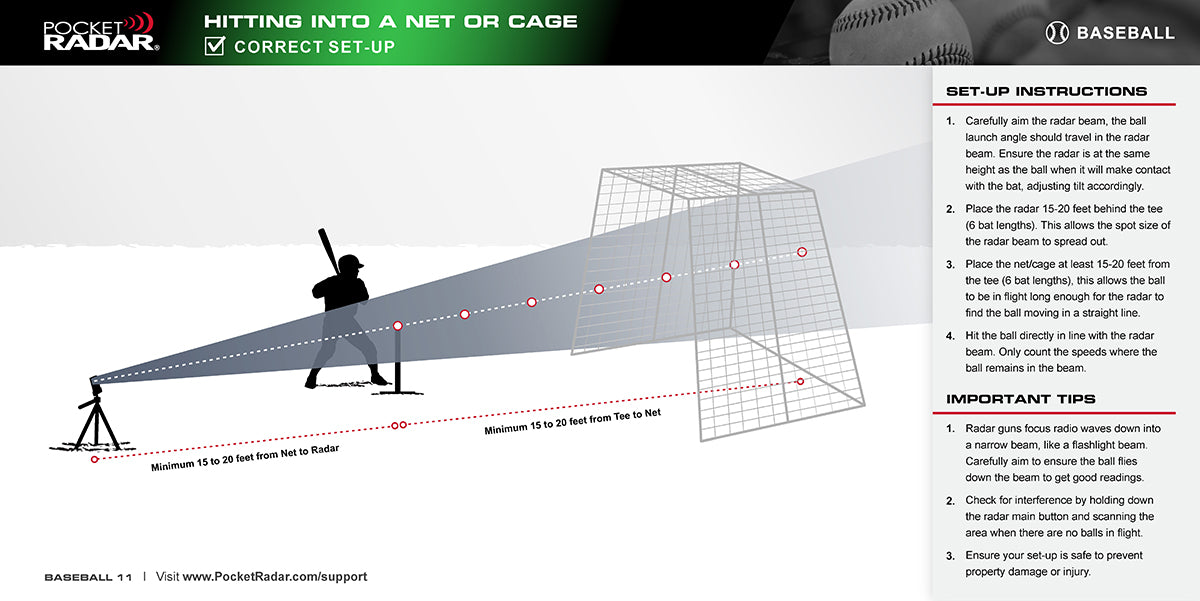- Dec 9, 2021
- 7
- 3
There are a lot of things that get posted about getting accurate readings on radar. We are always happy to help answer any questions. There are many things in the set-up and environment that can cause any radar gun to read low or get strange readings. The police have a 40 hour class created by the National Highway Traffic Safety Administration (NHTSA), to train officers on all of these issues before they write tickets with radar. We try to help people understand some of these critical issues to make sure they get good data with this simple acronym:
D - distances (there are minimum and maximum distances that need to be set up to be sure the radar can accurately track the ball)
A - aiming (all radar guns put out a very narrow focused beam, the ball must be in the beam at the release point and travel straight in-line with the beam)
T - tilt (a small amount of tilt on this focused beam can cause you to miss the ball at the release point and get a reading after it has slowed down due to air resistance)
A - angles (all radar guns get lower readings when the ball path is off-angle from the radar beam, this is due to something called the COSINE effect)
It is important to understand that a ball in flight slows down very rapidly due to air resistance. A softball pitch slows down 4 to 5 MPH from the pitcher to the catcher.
We have developed a great collection of set-up diagrams to help people understand what they need to do to get good readings with a radar gun. You can find them on the support page of our PocketRadar.com web-site. Here is a link:

 www.pocketradar.com
www.pocketradar.com
If you ever have any questions about any radar topics please feel reach to reach out to us on our toll-free support line at 888.381.2672 weekdays from 9 AM to 5 PM Pacific Time.
Please let me know if there is ever anything we can do to help.
Thanks,
Chris Stewart / President, Pocket Radar Inc.
D - distances (there are minimum and maximum distances that need to be set up to be sure the radar can accurately track the ball)
A - aiming (all radar guns put out a very narrow focused beam, the ball must be in the beam at the release point and travel straight in-line with the beam)
T - tilt (a small amount of tilt on this focused beam can cause you to miss the ball at the release point and get a reading after it has slowed down due to air resistance)
A - angles (all radar guns get lower readings when the ball path is off-angle from the radar beam, this is due to something called the COSINE effect)
It is important to understand that a ball in flight slows down very rapidly due to air resistance. A softball pitch slows down 4 to 5 MPH from the pitcher to the catcher.
We have developed a great collection of set-up diagrams to help people understand what they need to do to get good readings with a radar gun. You can find them on the support page of our PocketRadar.com web-site. Here is a link:

Sports Set Up Diagrams
Helpful set up diagrams that show you how radar works and where to correctly position radar to get the most reliable and accurate speed readings. How to set up Pocket radar diagrams for baseball, softball, cricket, and more.
 www.pocketradar.com
www.pocketradar.com
If you ever have any questions about any radar topics please feel reach to reach out to us on our toll-free support line at 888.381.2672 weekdays from 9 AM to 5 PM Pacific Time.
Please let me know if there is ever anything we can do to help.
Thanks,
Chris Stewart / President, Pocket Radar Inc.



